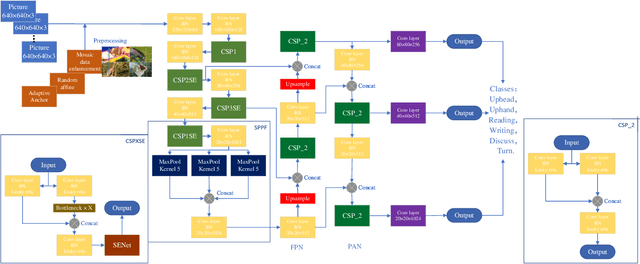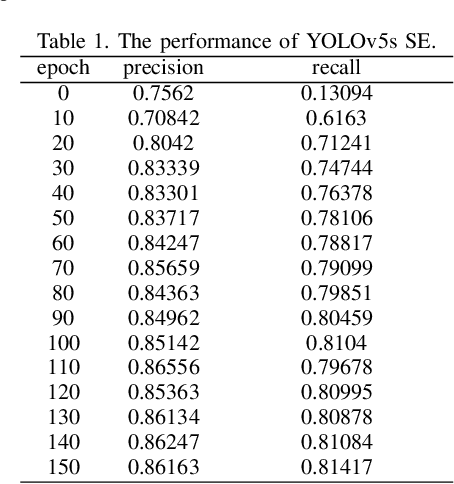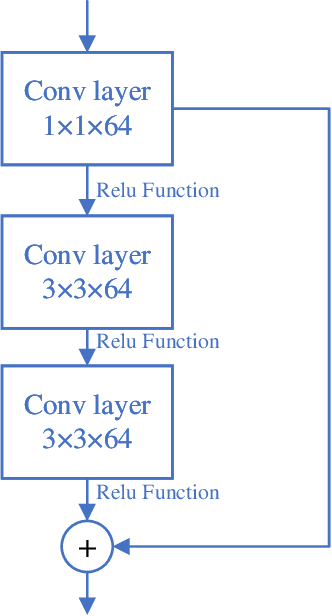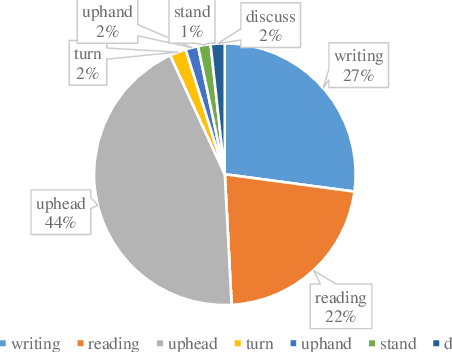Jialong Yao
Learning Behavior Recognition in Smart Classroom with Multiple Students Based on YOLOv5
Mar 20, 2023



Abstract:Deep learning-based computer vision technology has grown stronger in recent years, and cross-fertilization using computer vision technology has been a popular direction in recent years. The use of computer vision technology to identify students' learning behavior in the classroom can reduce the workload of traditional teachers in supervising students in the classroom, and ensure greater accuracy and comprehensiveness. However, existing student learning behavior detection systems are unable to track and detect multiple targets precisely, and the accuracy of learning behavior recognition is not high enough to meet the existing needs for the accurate recognition of student behavior in the classroom. To solve this problem, we propose a YOLOv5s network structure based on you only look once (YOLO) algorithm to recognize and analyze students' classroom behavior in this paper. Firstly, the input images taken in the smart classroom are pre-processed. Then, the pre-processed image is fed into the designed YOLOv5 networks to extract deep features through convolutional layers, and the Squeeze-and-Excitation (SE) attention detection mechanism is applied to reduce the weight of background information in the recognition process. Finally, the extracted features are classified by the Feature Pyramid Networks (FPN) and Path Aggregation Network (PAN) structures. Multiple groups of experiments were performed to compare with traditional learning behavior recognition methods to validate the effectiveness of the proposed method. When compared with YOLOv4, the proposed method is able to improve the mAP performance by 11%.
Graph Neural Networks Enhanced Smart Contract Vulnerability Detection of Educational Blockchain
Mar 08, 2023Abstract:With the development of blockchain technology, more and more attention has been paid to the intersection of blockchain and education, and various educational evaluation systems and E-learning systems are developed based on blockchain technology. Among them, Ethereum smart contract is favored by developers for its ``event-triggered" mechanism for building education intelligent trading systems and intelligent learning platforms. However, due to the immutability of blockchain, published smart contracts cannot be modified, so problematic contracts cannot be fixed by modifying the code in the educational blockchain. In recent years, security incidents due to smart contract vulnerabilities have caused huge property losses, so the detection of smart contract vulnerabilities in educational blockchain has become a great challenge. To solve this problem, this paper proposes a graph neural network (GNN) based vulnerability detection for smart contracts in educational blockchains. Firstly, the bytecodes are decompiled to get the opcode. Secondly, the basic blocks are divided, and the edges between the basic blocks according to the opcode execution logic are added. Then, the control flow graphs (CFG) are built. Finally, we designed a GNN-based model for vulnerability detection. The experimental results show that the proposed method is effective for the vulnerability detection of smart contracts. Compared with the traditional approaches, it can get good results with fewer layers of the GCN model, which shows that the contract bytecode and GCN model are efficient in vulnerability detection.
 Add to Chrome
Add to Chrome Add to Firefox
Add to Firefox Add to Edge
Add to Edge